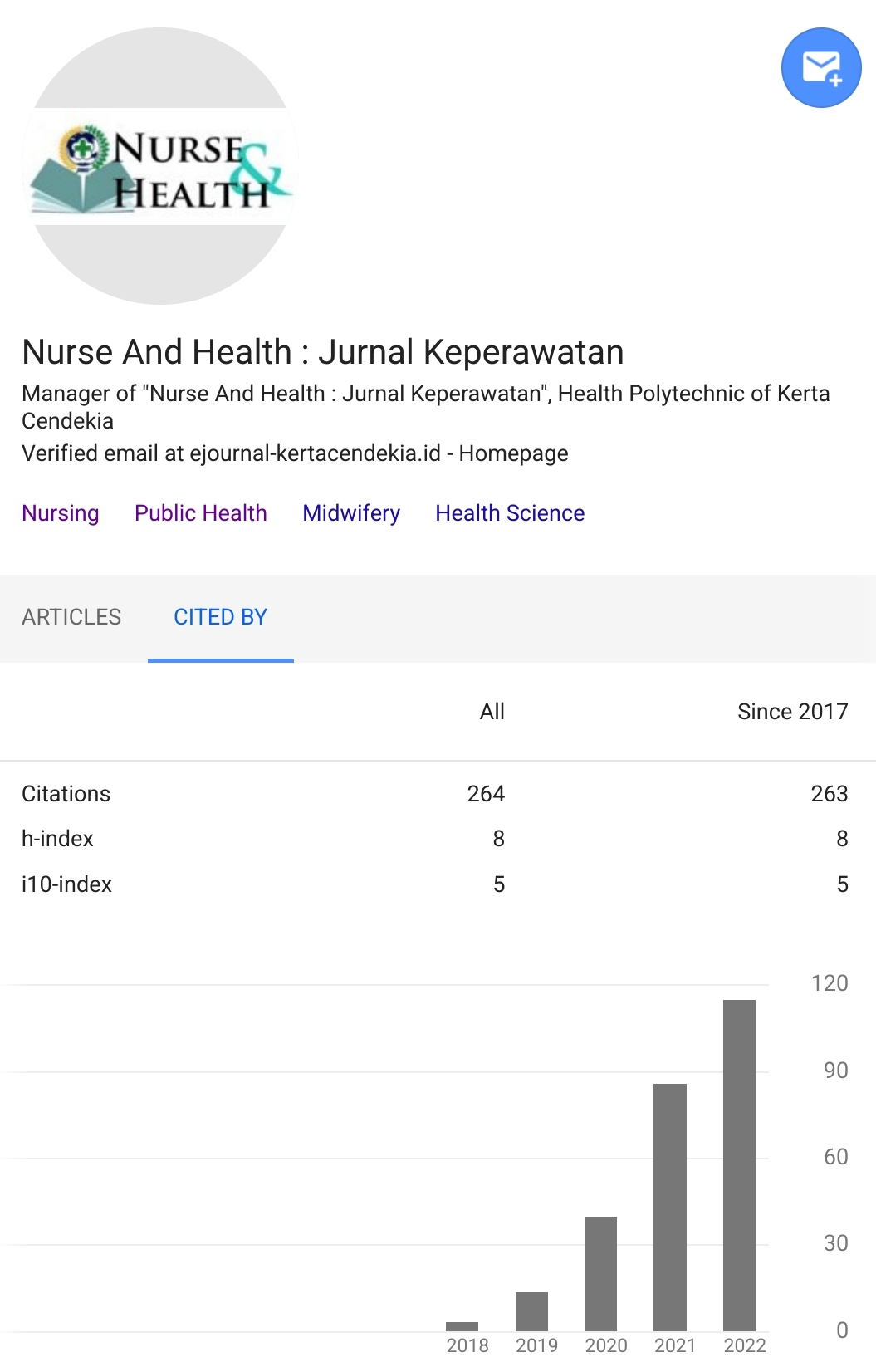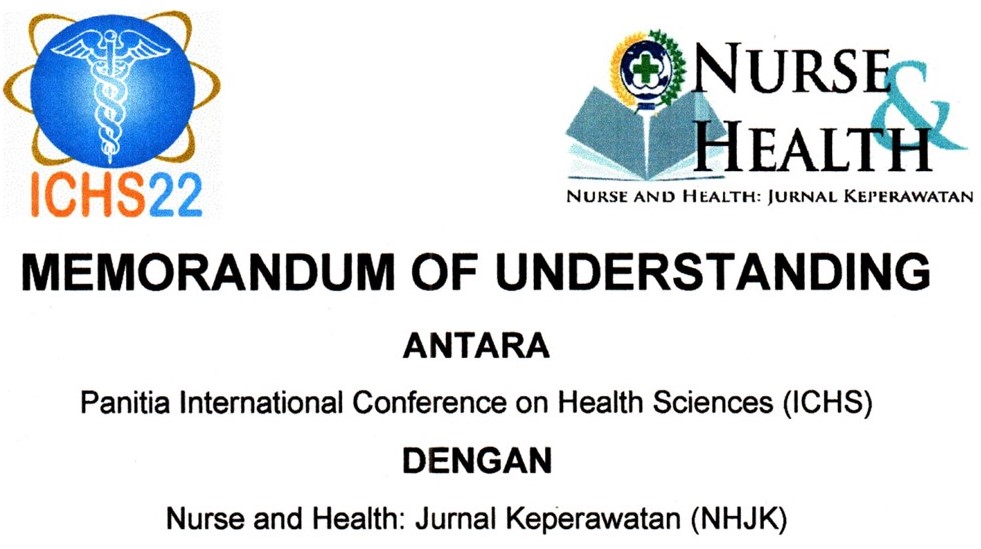THE ERGONOMIC GYMNASTIC ON BLOOD PRESSURE AMONG ELDERLY
Abstract
Background: Pre elderly and elderly experience uncontrolled hypertension due to disobedience to diet and not regularly taking medication (Padila, 2013). Uncontrolled hypertension can cause stroke, heart trouble, coronary heart disease and death (Laily, 2017). One of the non-pharmacological therapies to reduce blood pressure elderly with hypertension is ergonomic gymnastic (Wratsongko, 2010).Objectives: The purpose of this study was to analyze the effect of ergonomic gymnastic on blood pressure among elderly.Methods: This study was pre-experimental with one-group pre-posttest design approaches. Population in this study were all elderly in Suko Village who matched the inclusion and exclusion criteria as many as 25 people. The sample of this study were 23 respondents and were taken by simple random sampling technique. Respondents were given ergonomic exercises for twice a week with a duration of 30 minutes. Blood pressure measurement data were taken using a sphygmomanometer and a stethoscope. Wilcoxon sign rank test with significance value less than .05 were used to analyzed data.Results: The results of the study there were significant differences between before and after doing ergonomic gymnastic with p value = 0.00, meaning that there was an influence of ergonomic gymnastics on blood pressure among elderly in Suko Village.Conclusion: The Ergonomic gymnastic can reduce blood pressure among elderly in Suko Village. The role of nurses is needed as a provider of geriatric nursing care, especially in hypertension geriatric Keywords: Hypertension, Ergonomic Gymnastic, Elderly, Blood Pressure.Downloads
References
Dalimartha, Setiawan. (2008). Care Your Self. Hipertensi. Jakarta: Penebar Plus.
Depkes. (2017). Buku Profil Kesehatan Indonesia. Retrieved from http://www.depkes.go.id/resources/download/profil/PROFIL_KES_PROVINSI_2017/15Jatim2017 on September 28, 2019.
Efendi, Ferry & Makhfudli. (2009). Keperawatan Kesehatan Komunitas Teori dan Praktik dalam Keperawatan. Jakarta: Salemba Medika.
Elizabeth J. Corwin. (2010). Buku Saku Patofisiologi Corwin. Jakarta: Aditya Media.
EL, Manam M. (2011). Basmi Keluhan-Keluhan kesehatan Harian dengan Obat-ObatanAlami.Yogyakarta: Flashbooks.
Fatmah, (2010). Gizi Usia Lanjut. Jakarta: Erlangga.
Harvad Health Publication. (2010). Harvard Men’s Health Watch: Classification Blood Pressure Hypertension Illnesses. Boston, United State: Harvard Health Publication.
Kemenkes. (2014). Profil Kesehatan Indonesia 2014. Retrieved from http://www.depkes.go.id/resources/download/pusdatin/profil-kesehatan-indonesia-2014 on September 28, 2019.
Khasanah, K. (2012). Kualitas Tidur Lansia Balai Rehabilitasi Sosial “Mandiri” Semarang. Jurnal Nursing Studies, Volume 1, Nomor 1.
Kushariyadi. (2010). Asuhan Keperawatan Pada Klien Lanjut Usia. Jakarta: Salemba Medika.
Laily, Siti Rohmatul. (2017). Hubungan Karakteristik Penderita Dan Hipertensi Dengan Kejadian Stroke Iskemik. Jurnal Berkala Epidemiologi, 5 (1), 48-59.
Maryam, dkk. (2008). Mengenal Usia Lanjut dan Perawatannya. Jakarta: Salemba Medika.
Nisa, Intan. (2013). Khasiat Sakti Tanaman Obat Untuk Darah Tinggi. Jakarta: Salemba Medika.
Nugroho. (2000). Keperawatan Komunitas. Jakarta: Salemba Medika.
Notoadmodjo. (2006). Metodologi Penelitian Ed Revisi. Jakarta: Rineka Cipta.
Nugroho, Wahyudi. (2008). Keperawatan Gerontik & Geriatrik. Jakarta: EGC.
Once. (2011). Latihan Fisik Untuk Kesegaran Jasmani Lansia (Online). Retrieved from http://www.dronce.com/archive/1312/latihan-fisik-untuk-menjaga- kebugaran-jasmani-pada-lansia on October 13, 2019.
Padila. (2013). Asuhan Keperawatan Penyakit Dalam. Yogyakarta: Nuha Medika.
Potter, Patricia A. & Anne G, Perry. (2009). Fundamental Keperawatan Buku 1 Ed 7. Jakarta: Salemba Medika.
Ramadhan, A.J. (2010). Mencermati Berbagai Gangguan pada Darah dan Pembuluh Darah. Yogyakarta: DIVA Press.
Riskesdas. (2018). Hasil Rikesdas 2018. Retrieved from http://www.depkes.go.id/resources/download/info-terkini/materi_rakorpop-2018/Hasil%2520Riskesdas%252018 on September 28, 2019.
Sagiran. (2012). Mukjizat Gerakan Shalat. Penelitian Dokter Ahli Bedah dalam Pencegahan & Penyembuhan Penyakit. Jakarta: Qultum Media.
Suiraoka. (2012). Penyakit Degeneratif. Yogyakarta: Nuha Medika.
Udjianti, Wajan Juni. (2013). Keperawatan Kardiovaskuler. Jakarta: Salemba Medika.
Wijayakusuma, H. (2008). Ramuan Lengkap Herbal Taklukkan Penyakit. Jakarta: Pustaka Bunda.
Wratsongko, Madyo. (2007). Mukjizat Gerakan Sholat. Depok: Qultum Media.
Wratsongko, M. (2015). Shalat Jadi Obat. Jakarta: Elek Media Komputindo.
Wratsongko, M. (2015). Mukjizat Gerakan Shalat & Rahasia 13 Unsur Manusia, cetakan 1, Mizania. Jakarta. Salemba Medika.
Authors who publish with Nurse and Health: Jurnal Keperawatan agree to the following terms:
- Authors retain copyright licensed under a Creative Commons Attribution-NonCommercial 4.0 (CC BY-NC 4.0), which allows others to remix, tweak, and build upon the authors' work non-commercially, and although the others' new works must also acknowledge the authors and be non-commercial, they don't have to license their derivative works on the same terms.
- Authors are permitted and encouraged to post their work online (e.g., in institutional repositories or on their website) prior to and during the submission process, as it can lead to productive exchanges, as well as earlier and greater citation of published work (See The Effect of Open Access). Authors can archive pre-print and post-print or publisher's version/PDF.








_resize1.jpg)















